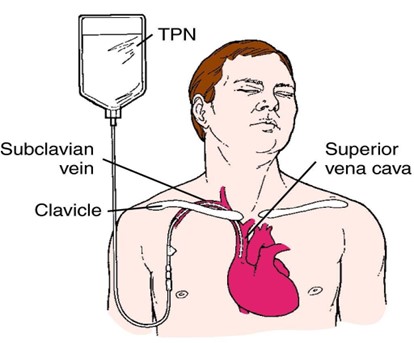A nurse is caring for a client who is starting to take aspirin 81 mg daily. Which of the following findings should the nurse identify as a risk factor for the client's development of an aspirin-induced ulcer?
The client has a history of alcohol use disorder but is currently sober
The client recently had a norovirus infection
The client smokes one pack of cigarette per day
The client has a history of rheumatoid arthritis
The Correct Answer is C
Smoking is a known risk factor for the development of aspirin-induced ulcers. It can increase the risk of gastrointestinal bleeding and compromise the integrity of the gastric mucosa. Smoking can also impair the healing process and increase the risk of complications associated with ulcers.
While the other factors mentioned in the options may have their own health implications, smoking is specifically associated with an increased risk of aspirin-induced ulcers. Therefore, the nurse should identify the client's smoking habit as a risk factor for the development of an aspirin-induced ulcer.
Nursing Test Bank
Naxlex Comprehensive Predictor Exams
Related Questions
Correct Answer is B
Explanation
When caring for a client receiving a continuous infusion of total parenteral nutrition (TPN), the nurse should implement the intervention of checking the client's blood glucose level regularly. TPN is a highly concentrated intravenous nutrition solution containing glucose, amino acids, lipids, vitamins, and minerals, and it is used to provide complete nutrition when the client cannot take oral nutrition.
Monitoring blood glucose levels regularly is essential because TPN is rich in glucose, which can significantly affect the client's blood sugar levels. Hyperglycemia (high blood sugar) is a potential complication of TPN infusion. Regular blood glucose monitoring allows the nurse to detect and address any changes in blood sugar levels promptly and to adjust the TPN infusion rate or administer insulin, if necessary, to maintain the client's blood sugar within the target range.
Let's go through the other options:
A. Change the TPN infusion tubing once every 3 days: While changing the TPN infusion tubing regularly is a good practice to maintain asepsis and prevent infection, it is not the priority intervention in this situation. Regularly checking the client's blood glucose level is more crucial to monitor the effects of TPN on blood sugar levels.
C. Insert the peripheral IV catheter for administration: Total parenteral nutrition is a hypertonic solution that can cause irritation and damage to peripheral veins. It is usually administered through a central venous catheter (CVC) placed in a large vein, such as the subclavian or jugular vein. Inserting a peripheral IV catheter for TPN administration is not recommended due to the risk of vein damage and thrombosis.
D. Monitor the client's weight every 3 days: Monitoring the client's weight is an important part of assessing their nutritional status and fluid balance. However, the priority intervention for a client receiving TPN is checking their blood glucose level regularly, as hyperglycemia is a common and significant concern in TPN administration.

Correct Answer is D
Explanation
The nurse should report to the provider that the client is taking ginkgo biloba. Ginkgo biloba is an herbal supplement that can interact with clopidogrel and other antiplatelet medications. It may increase the risk of bleeding when taken concurrently with clopidogrel, which is an antiplatelet medication used to prevent blood clots after coronary artery stenting.
Let's go through the other options:
A. The client is taking acetaminophen: Acetaminophen is not known to have significant interactions with clopidogrel. It is a commonly used pain reliever and fever reducer and does not usually affect the antiplatelet activity of clopidogrel.
B. The client is taking valerian: Valerian is an herbal supplement often used as a sleep aid or to reduce anxiety. While there is limited evidence of significant interactions with clopidogrel, it is generally recommended to use caution when combining valerian with antiplatelet medications. However, it is not as concerning as ginkgo biloba in terms of potential bleeding risk.
C. The client is taking vitamin B6: Vitamin B6 is a water-soluble vitamin and is not expected to have significant interactions with clopidogrel. It is generally considered safe to use vitamin B6 with antiplatelet medications like clopidogrel.
Whether you are a student looking to ace your exams or a practicing nurse seeking to enhance your expertise , our nursing education contents will empower you with the confidence and competence to make a difference in the lives of patients and become a respected leader in the healthcare field.
Visit Naxlex, invest in your future and unlock endless possibilities with our unparalleled nursing education contents today
Report Wrong Answer on the Current Question
Do you disagree with the answer? If yes, what is your expected answer? Explain.
Kindly be descriptive with the issue you are facing.
